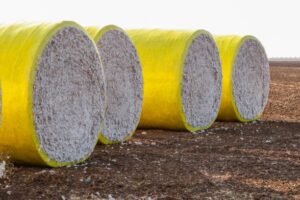Baler Twine: What Does Baler Twine Cost?
Baling twine is a small-diameter sisal or synthetic twine used to bind hay and straw into a compact form that can be easily stacked. It can be found in various colours and has varying tensile strengths.
9,000 ft of high visibility baler twine resists mildew, rot and moisture and is treated to repel rodents. It is also uniform for consistent baling. For more information about the baler twine cost, click here.
Cost Per Roll
 In agriculture, few tools are as crucial as baler twine. This durable twine is used to bind bales of hay and straw, making them easier to transport and store. It is also easy to operate, saving farmers valuable time and money. This product is available in various sizes and strengths, allowing farmers to choose the best option for their needs.
In agriculture, few tools are as crucial as baler twine. This durable twine is used to bind bales of hay and straw, making them easier to transport and store. It is also easy to operate, saving farmers valuable time and money. This product is available in various sizes and strengths, allowing farmers to choose the best option for their needs.
Poly baler twine is designed to bind large square or round hay, straw, and silage bales. It has a high tensile strength and holds knots well. It also resists mildew and rot and won’t become brittle over time. It is also made of biodegradable materials, making it environmentally friendly.
This hay twine is made with natural fibre and is suitable for all balers. It has various knot strengths and lengths for different baler configurations and crops. It works flawlessly in all properly adjusted balers and is resistant to rot, mildew, and insects. It is an excellent alternative to traditional sisal twine.
Cost Per Bale
When it comes to baling twine, there are many options on the market. Some are made from natural sisal, while others are based on polypropylene, which won’t biodegrade soon. Both have their strengths and weaknesses. The best choice depends on the farmer’s needs, but both are suitable for use in a baling machine. For more information about the baler twine cost, click here.
A good quality twine is durable and easy to tie. It should have a high tensile strength and be treated to resist pests and vermin. It should also be UV-resistant to protect against damage from the sun’s rays.
The best option is to choose a made-in-the-USA twine guaranteed to have a certain number of feet per carton. For example, the BridonMAX round, slit-film 110-weight twine is sold in a 40,000-foot carton. This makes it easy for farmers to keep track of their baling twine and prevent waste. It also helps them get the most out of their state-of-the-art balers.
Cost Per Foot
When preparing to bale your hay, having the proper twine for the job is essential. To determine how much you’ll need, you’ll need to know critical numbers, including the size of your bales and the number you expect to produce in any three-day window. Then, based on these factors, you can calculate how much twine to order.
This sisal baler twine is treated to resist insects and vermin, so it’s safe for the environment and crops. It’s also uniform for consistent baling and has a 290 lb. tensile strength. This twine is biodegradable, which means it will break down over time without clogging your machines.
This CountyLine Brazilian baler twine is ideal for rope-related tasks, including keeping hay together and closing fence gates. It’s treated to prevent insect and rodent damage and is biodegradable, so it’s good for the environment. It comes with two rolls that contain a total of 9,000 feet of twine. For more information about the baler twine cost, click here.
Cost Per Ton
Baler twine is a type of twine used to bind small bales of hay or straw. It’s also known as hay twine, baling string, and balling twine. It’s a durable, long-lasting product can help prevent hay loss and improve quality. It also makes transportation and storage easier.
Depending on the customer’s preference, the twine can be made from natural sisal or synthetic materials. It can be used for various applications, including wrapping bales and closing fence gates. It’s also easy to use and is biodegradable.
Using twine in large quantities can be expensive, so planning and knowing how much you will need is essential. You can calculate the amount of twine you require for a season by considering your estimated bale production and size. This will ensure that you have enough twine to get the job done. You can even purchase a twine calculator to make the process easier.
